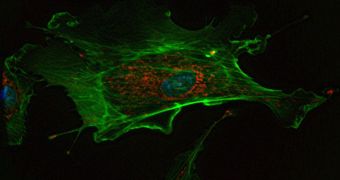About a decade ago, experts demonstrated that it is possible to use printers to create living tissue. In a new study, experts have taken an extremely important step forward in the effort to create printing technologies that can produce mass amounts of stem cells.
By replacing printer ink cartridges with batches of cells, experts were able to produce living tissues by literally printing cell-laden droplets of liquid on surfaces. But while this ability is remarkable in itself, scientists want to take it a lot further.
In short, they don't want to stop until they create a method of literally printing entire organs. Replacement hearts, lungs, bladders and livers – created from a patient's own stem cells – are the main objective that cellular printers must reach.
However, in order for this to become a reality, experts first need to be able to produce batch amounts of relevant stem cells that can then go on and differentiate into whatever cell types experts need.
In the newest research on the issue, experts with the Harvard Medical School and the Brigham and Women’s Hospital collaborated to create a new way of printing large amounts of embryonic stem cells. The work was carried out at the joint Bio-Acoustic Mems in Medicine Laboratory.
Dr. Utkan Demirci, the leader of the research team, used his pioneering acoustical work as a starting point. The expert and his team have already developed a method of generating droplets from fluids exclusively through the use of sound waves.
Details of the new research appear in the latest issue of the esteemed journal Biomicrofluids, which is published by the American Institute of Physics. The paper also details an innovative technique of creating embroid body formations.
These structures are essential for preserving stem cells' ability to transform into any type of cell in the human body. The key to doing so is putting them together via a process that exerts little to no mechanical stress on the formations.
The team achieved this by using a new automated bioprinting technique that the collaboration developed. At this point, the experts plan to focus future studies on improving this method even further, Science Blog reports.
“To have the capability to manipulate cells in a high-throughput environment reliably and repeatedly, whether it is a single cell or tens of thousands of cells in a single droplet, has the potential to enable potential solutions to many problems in medicine and engineering,” Dr. Demirci explains.

 14 DAY TRIAL //
14 DAY TRIAL //